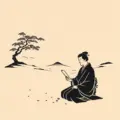Extended metaphors are an extremely powerful tool in both poetic writing and prose. Free verse and structured poetry can both benefit from extended metaphor, often leading to greater depth in a poetic work.
There are many famous examples of extended metaphors being used in both poetry and prose. In many poems and pieces of prose writing, extended metaphors can often create the entire structure and concept of a text.
For example, The Divine Comedy, by Dante Alighieri, is an extended metaphor for the journey of the soul through purgatory and into paradise. The entire poem is based on this extended metaphor, with each section representing a different stage of the journey.
In free verse poetry, extended metaphors can be used to great effect in order to create a more vivid and evocative image. Often, free verse poets will use an extended metaphor in order to explore a certain concept or idea in greater depth.
Contents
- 1 What Is An Extended Metaphor?
- 2 What Are The Different Types Of Extended Metaphor Used In Poetry?
- 3 Types of Extended Metaphors (Conceit and Allegory)
- 4 What Are Some Extended Metaphor Examples?
- 5 How To Use Extended Metaphors In Your Writing?
What Is An Extended Metaphor?
An extended metaphor is a figure of speech that employs a single metaphor or analogy at length throughout a work, poem, or piece of writing. The purpose of extended metaphors is to add greater meaning and substance to the initial comparison, often developing the idea over the course of the work. In essence, it can be thought of as taking a single metaphor and “extending” it throughout the course of the writing.
There are thousands of examples of this, and it is even common practice to look for extended metaphors within a poet or author’s work, even if it’s something that didn’t initially intend. It’s also important to note that an extended metaphor doesn’t need to be announced as such; it can be more subtle, and the reader may not even realize they’re encountering one. It is often only after reading the work in its entirety that the full extent of the comparison becomes clear.
Extended metaphors are often used in free verse poetry as a way to add depth and meaning to the poem. By using an extended metaphor, the poet is able to take a simple idea or concept and explore it in greater detail, often revealing new layers of meaning in the process. This can be an effective way to add interest and complexity to a poem, and can also help to create a more vivid and memorable experience for the reader.
Simple Extended Metaphor Definition:
A simple extended metaphor definition is a figure of speech that employs a single metaphor or analogy at length throughout a work, poem, or piece of writing.
What’s The Difference Between Extended & Sustained Metaphor?
The terms “extended metaphor” and “sustained metaphor” are often used interchangeably, but there is actually a subtle difference between the two. The main difference between the two is that an extended metaphor is one that is developed over the course of a work, poem, or piece of writing, while a sustained metaphor is one that is continued throughout the entire work.
Extension implies that the author or poet is digging deeper into the metaphor, and potentially dragging in other aspects of the metaphor which may not be immediately apparent. A sustained metaphor, in comparison, is simply that – a metaphor which is continued throughout the work, without developing it as a concept.
Can The Weather Be Used As A Sustained Metaphor?
The weather can most definitely be used as a sustained metaphor! In fact, many poets and authors have used the weather to sustain a metaphor throughout their work. For example, William Shakespeare, in his play “Macbeth”, the weather is used as a metaphor for the chaos and turmoil that is taking place within the kingdom. The stormy weather mirrors the internal conflict and turmoil that is brewing within Macbeth himself, and ultimately leads to his downfall.
This is also known as prophetic fallacy, and is one of the most common and obvious uses of sustained metaphor.
As the use of prophetic fallacy and the weather only acts on one level as a metaphor, with no great exploration, it classes as a sustained, rather than an extended, metaphor.
What Are The Different Types Of Extended Metaphor Used In Poetry?
There are four different types of extended metaphor which are commonly used in poetry, particularly in modern free verse:
- Submerged Metaphor – The submerged metaphor is one where the initial comparison is not immediately apparent, and only becomes clear as the poem or piece of writing progresses.
- Reversed Metaphor – The reversed metaphor is one where the initial comparison is stated outright, but then reversed or contradicted later on in the poem.
- Broken Metaphor – The broken metaphor is one where the initial comparison is made, but then broken or interrupted before it can be fully explored.
- Combined Metaphor – Lastly, the combined metaphor is one where multiple metaphors are used in conjunction with one another to explore a single concept or idea.
How Is An Extended Metaphor Different To A Standard Metaphor?
The main difference between an extended metaphor and a standard metaphor is that a standard metaphor is one that is used to make a comparison between two things, without delving too deeply into the meaning or implications of the comparison. An extended metaphor, on the other hand, is one that is used to explore a concept or idea in greater depth.
An extended metaphor will often play a core part of the narrative, setting or theme of a piece of writing. However, a standard, or simple, metaphor will only be used once, or multiple times at a surface level, without playing a major role in the overall concept of the poem.
Types of Extended Metaphors (Conceit and Allegory)
Extended metaphors can often be used in different aside from a metaphor inside a piece of work. For example, there are also extended metaphors which can be used as the setting for an entire piece of writing, poem or story.
Both allegories and conceits could be considered as other examples of extended metaphors.
What Is An Allegory?
An allegory is a type of extended, initial metaphor, which can be used as the setting for an entire poem or piece of writing. It is a story, poem or image in which characters, objects or actions represent ideas or concepts.
For example, George Orwell’s “Animal Farm” is an allegory for the Soviet Union under Joseph Stalin’s rule. The animals on the farm represent different groups of people in society, and the events that take place on the farm represent key events in Soviet history.
What Is A Conceit?
A conceit is a type of extended metaphor which is often used in love poetry. It is a clever or ingenious comparison between two things which are very different from one another.
For example, John Donne’s “A Valediction: Forbidding Mourning” is a conceit in which he compares his love for his wife to the two legs of a compass. The legs of the compass are able to move independently from one another, but they are still drawn together by an invisible force. In the same way, he and his wife may be apart from one another, but they will still be drawn together by their love.
What Are Some Extended Metaphor Examples?
An example of an extended metaphor would be if an author was writing about the concept of love, and used the metaphor of a rose throughout their work. They could explore the different stages of love, from the first bloom of infatuation, to the thorns of heartbreak, and eventually the fading petals of a love that has run its course.
Another example would be if a poet was writing about the concept of time, and used the metaphor of a river throughout their poem. They could explore how time is always moving forward, never able to be stopped or turned back, and how it can sweep people away with its unstoppable force.
Ultimately, the extended metaphor is a powerful tool that can be used to explore a wide range of concepts and ideas in greater depth. When used effectively, it can add a whole new level of meaning to a piece of writing, and really help to bring the concept to life for the reader.
What Are Some Extended Metaphor Examples In Poetry?
When it comes to free verse poetry, extended metaphors can be used in a number of ways. For example, they can be used to add depth and meaning to the poem, or to create a more vivid and memorable experience for the reader.
Extended metaphors can be used in a number of ways, depending on the poet’s intent. However, they all share one common goal: to explore a concept or idea in greater depth and greater accuracy, while writing with great beauty, sensitivity and poise.
Some of the most famous examples of extended metaphor in free verse poetry include “The Waste Land” by T.S. Eliot, “The Love Song of J. Alfred Prufrock” by T.S. Eliot, and “A Modest Proposal” by Jonathan Swift.
The Waste Land
In “The Waste Land”, Eliot uses an extended metaphor to explore the idea of spiritual dryness and emptiness. The poem is set in a wasteland, which is a metaphor for the spiritual and emotional state of the characters in the poem.
The Love Song of J. Alfred Prufrock
In “The Love Song of J. Alfred Prufrock”, Eliot uses an extended metaphor to create a picture of a man who is trapped in a cycle of indecision and inaction. The poem is structured as a conversation, with Prufrock constantly changing his mind and unable to make any decisions. This extended metaphor is used to explore the idea of paralysis, and the ways in which it can impact our lives.
A Modest Proposal
In “A Modest Proposal”, Jonathan Swift uses an extended metaphor to satirize the way in which the rich and powerful exploit the poor. The proposal itself is a metaphor for the way in which the rich and powerful use the poor for their own gain, without any regard for their welfare.
All The World’s A Stage
You could also suggest that William Shakespeare’s “All the world’s a stage, And all the men and women merely players” is an extended metaphor. Here, Shakespeare is using the stage to represent life, and the players to represent the people who live it. He is suggesting that we are all merely players in the grand scheme of things, and that our lives are ultimately just a performance.
Who Are Some Famous Writers Who Rely On Extended Metaphor?
There are plenty of famous writers who use extended metaphors in their writing. For example, William Shakespeare, Robert Frost, Dante Alighieri, T.S. Eliot, and Sylvia Plath are all well-known for their use of extended metaphor.
How Does Emily Dickinson Use Metaphor As A Literary Device In “Hope Is The Thing With Feathers”?
In the poem “Hope is the thing with feathers,” Emily Dickinson uses metaphor as a literary device to compare hope to a bird. This is an example of an extended metaphor, as the comparison is carried throughout the entire poem.
The use of metaphor in this literature example allows Dickinson to explore the concept of hope in the limited language that we have available, and ensures we are all able to understand the point she is trying to make.
“Hope” is the thing with feathers –
That perches in the soul –
And sings the tune without the words –
And never stops – at all –
And sweetest – in the Gale – is heard –
And sore must be the storm –
That could abash the little Bird
That kept so many warm –
I’ve heard it in the chillest land –
And on the strangest Sea –
Yet – never – in Extremity,
It asked a crumb – of me.
What Light Through Yonder Window Breaks?
Shakespeare, for example, used extended metaphors to great effect, particularly in Romeo and Juliet. In Romeo’s great monologue (Act 2, Scene 2), he used an extended metaphor comparing Juliet to the sun. This primary metaphor progresses throughout the monologue, exploring different aspects of her radiance across multiple lines, and in the most magnificent words:
But, soft! what light through yonder window breaks?
It is the east, and Juliet is the sun.
Arise, fair sun, and kill the envious moon,
Who is already sick and pale with grief,
That thou her maid art far more fair than she:
Be not her maid, since she is envious;
Her vestal livery is but sick and green
And none but fools do wear it; cast it off.
It is my lady, O, it is my love!
O, that she knew she were!
She speaks yet she says nothing: what of that?
Her eye discourses; I will answer it.
I am too bold, ’tis not to me she speaks:
Two of the fairest stars in all the heaven,
Having some business, do entreat her eyes
To twinkle in their spheres till they return.
What if her eyes were there, they in her head?
The brightness of her cheek would shame those stars,
As daylight doth a lamp; her eyes in heaven
Would through the airy region stream so bright
That birds would sing and think it were not night.
See, how she leans her cheek upon her hand!
O, that I were a glove upon that hand,
That I might touch that cheek!
How To Use Extended Metaphors In Your Writing?
If you’re interested in using extended metaphors, or other kinds of figurative language, in your own writing, there are a few things to keep in mind. Firstly, it’s important to choose a metaphor that is suitable for the subject matter you’re exploring. The concept of the journey is an extremely common extended metaphor, and for good reason.
A long journey can be used to cover a wide range of emotions and themes, including love, loss, depression, recovery, and much more. Over the years, it has been used by everyone from Homer and Dante to Lewis Carroll and J.R.R. Tolkien.
How Is Extended Metaphor Used In Free Verse Poetry?
In free verse poetry, extended metaphor can be used in a number of ways. For example, it can be used to add depth and meaning to the poem, or to create a more vivid and memorable experience for the reader. Additionally, extended metaphor can be used to explore a concept or idea in greater depth.
In most instances, an extended metaphor can make all the difference within a poem, as they are often used as the entire structure and theme, particularly of shorter pieces of writing.
- Glossary of Japanese Poetry Terms - 26 February 2025
- What is Waka Poetry? - 23 May 2024
- How to Identify the Kigo in a Haiku: - 22 March 2024





